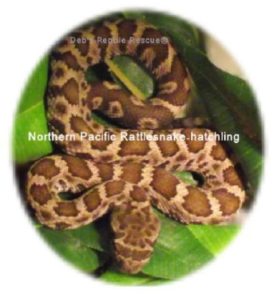The Northern Pacific Rattlesnake (a subspecies of the Western Rattlesnake) can be found in numerous habitats throughout our foothills and higher elevations up to 11,000 feet. They need den sites-rodent burrows, rock crevices, rotting logs-and a decent rodent population to hunt for food. Meadows, forests, range lands and even home gardens can provide these requirements.
Rattlesnakes are most active April through October. They hibernate during the winter to survive frigid temperatures. Our recent early, dry, warm spring could mean greater winter survival; thus, more rattlesnakes in our foothill communities. Rattlesnakes function best at temperatures ranging from 77-89 degrees Fahrenheit. This means that rattlesnakes can be active on warm nights.
Rattlesnakes are best identified by their triangular-shaped head. They are an important part of our foothill ecosystem and help keep prey populations in balance. Despite their beneficial attributes, many people have zero tolerance regarding rattlesnakes near their homes. However, habitat modification and exclusion practices should be attempted before resorting to extermination.
To keep rattlesnakes from taking up residence in your garden or yard, you can modify the habitat by eliminating all hiding places like lumber piles, rock piles, and rotting stumps and logs. Mow tall grasses and weeds, and clear underbrush. Fill in burrows. Control rodent populations to decrease the attractiveness of the area as a rattlesnake home.
To exclude rattlesnakes from hiding in and under buildings, basements, and garages, as well as enclosures for pools and hot tubs, seal all cracks that are larger than ¼ inch. Solid or small-holed mesh fences, three feet high and buried a few inches into the ground can be used to protect gardens and play areas. It is important that all gates to these enclosures fit tightly and that all vegetation is removed from around the perimeter and on the fences.
When outdoors during this time of year, exercise caution to avoid an unwelcome rattlesnake encounter. Don’t go barefoot or stick body parts in places that you can’t see well. Always look for snakes when stepping near logs, raised garden beds and rock borders as snakes like to hide along their edges. Be cautious around pools, fountains and fishponds; snakes are attracted to moisture on hot days and they are excellent swimmers. Look carefully when reaching for firewood, sticks or vegetables from thickly foliaged plants.
Most bites occur when people try to handle or kill rattlesnakes. If you kill a rattlesnake, be aware that it can still bite you-warm hands can trigger a strike reflex since sensory heat pits still function hours after death. If you need to eradicate a rattlesnake that has taken up residence at your home, call a professional pest expert with rattlesnake removal skills. If you encounter a rattlesnake, leave it alone; most of the time it will head off to someplace else.
For more information, visit http://www.ipm.ucdavis.edu/PMG/PESTNOTES/pn74119.html
Kathi Joye is a Tuolumne County Master Gardener who enjoys high elevation gardening in the Sierra Nevada foothills.


